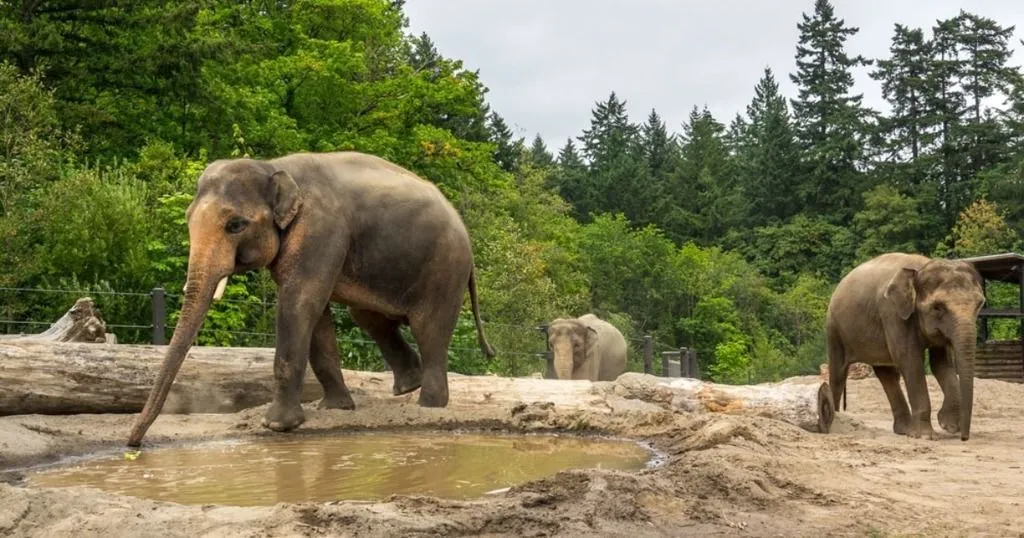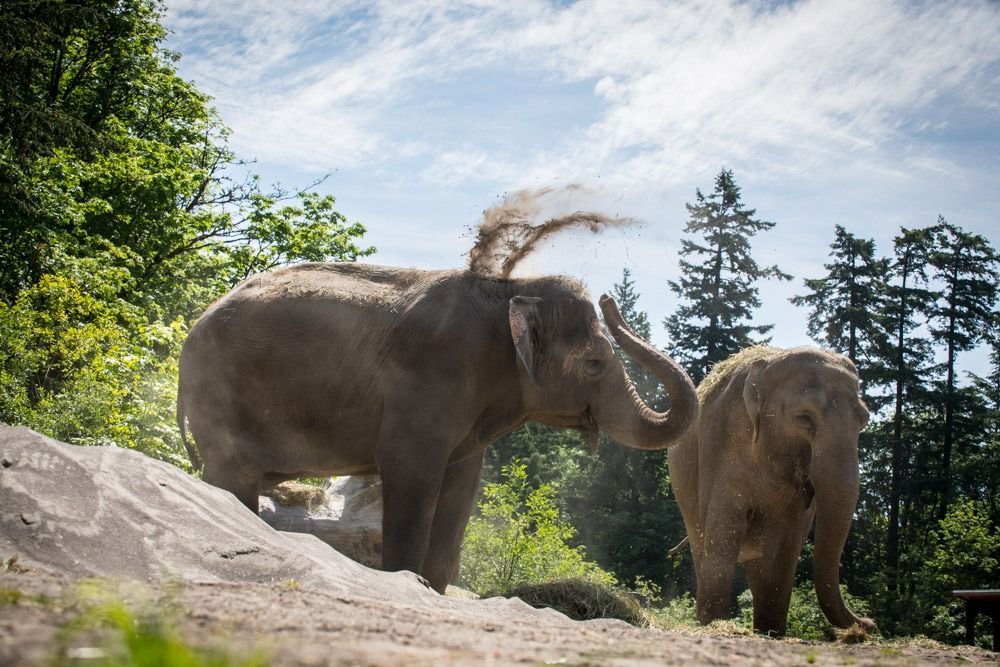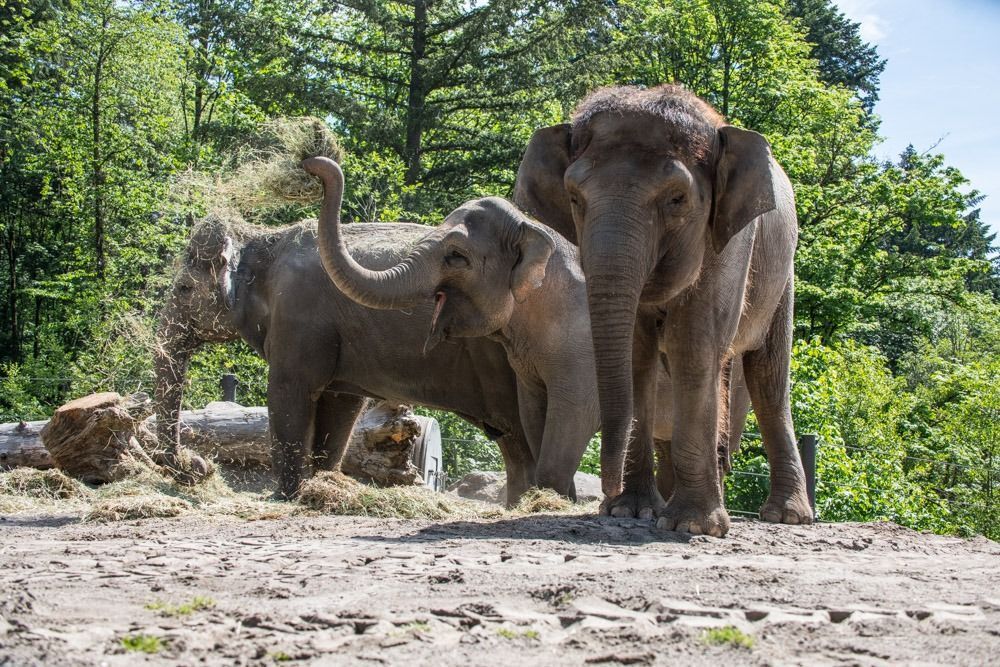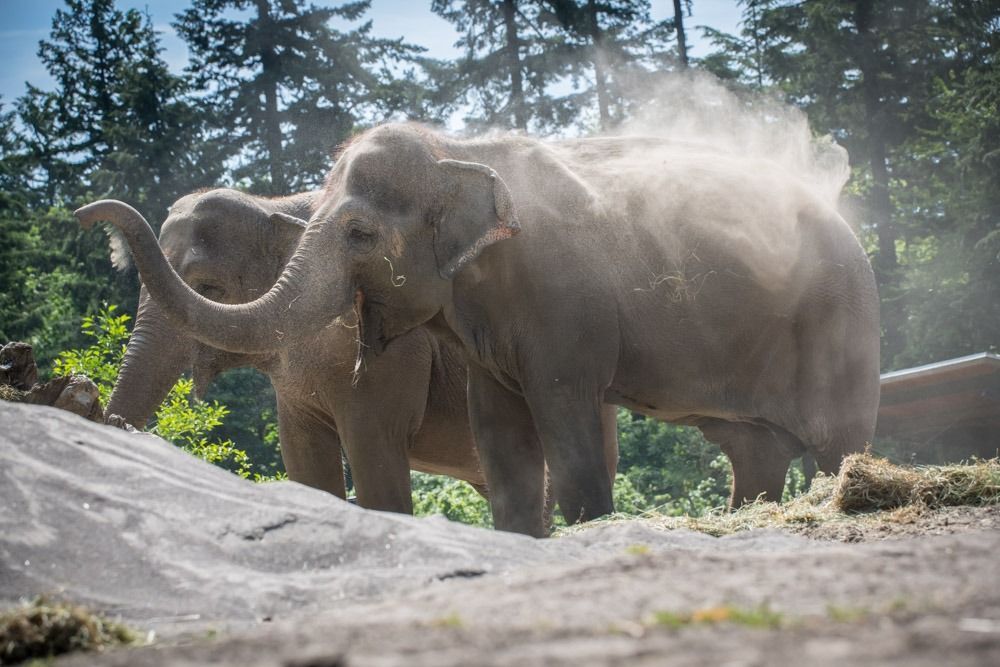Behavioral research shows how elephants like their new habitat at the Oregon Zoo
The elephants at the Oregon Zoo got a new and improved place to live. This 4-year study described in detail how the animals adapted and liked the new features of their habitat.
Posted by
Published on
Thu 16 Dec. 2021
Topics
| Coding Behavior | Elephants | The Observer XT |

When I was just a little kid, my parents took me and my younger brother to the zoo on a regular basis. I used to love those trips. Funny monkeys, colorful flamingos, and impressive elephants. I grew up loving animals, and ended up studying Animal Sciences at Wageningen University.
As I traveled for my internship at the Smithsonian Institute and later for my job here at Noldus, I visited different zoos in Europe and across the US. I got some peeks behind the scenes and participated in a couple of small projects. This is where I learned how behavioral research not only benefits the welfare of zoo animals, but also impacts the conservation of species and wildlife management.
Behavioral research shows how elephants like their new habitat at the Oregon Zoo
In this post, I want to share a recent study in which researchers used The Observer XT behavioral analysis software to monitor the transition of an elephant herd to their new zoo habitat at the Oregon Zoo (Portland, OR, US). This study, recently described in Animals, is a great example illustrating why behavioral observation matters.
 Photo: Oregon Zoo
Photo: Oregon ZooElephants at the Oregon Zoo
The Oregon Zoo houses a herd of 5 Asian elephants. The zoo wanted to improve their welfare with evidence-based approaches. This meant creating a complex new habitat and monitoring the elephants closely by measuring hormone levels, activity, and behavior before, during, and after construction.
Over the course of four years, elephants were closely monitored by collecting blood and fecal samples to measure reproductive and adrenal hormones, respectively, measuring walking distances with GPS bracelets, and detailed behavioral assessments.
Giving the herd a new environment
Dr. Sharon Glaeser and her colleagues elaborately described this whole process of transition to the new habitat in Animals. An environment with improved spatial features, offering the elephants more choice in how and where to spend their time, and with whom. Natural substrates, a multitude of areas, and several feeding systems gave the elephants more choice and control for psychological well-being.
What I especially like about this study, is that the benefits from the new habitat as seen by caretakers, is backed by actual data, by science. Which means that these finding can be helpful for other zoos, and even conservation of species in wildlife projects under human management.
 Photo: Oregon Zoo
Photo: Oregon ZooDesigning choice and challenges
The zoo wanted to create an environment to suit natural herd dynamics, with multi-generational matrilineal groups in which the bulls could join and leave as they would in the wild.
Studies show that animals need choice, control, and challenges for optimal well-being. This requires a flexible habitat, with indoor and outdoor access. The new habitat was designed with a complexity that made sure the elephants could not see the entire space at once, and they got their exercise exploring it.
Feeding strategies
The design also included flexible feeding strategies: food was offered at unpredictable times and places, using timed feeders. Sometimes certain manipulation was needed to get the food from puzzle feeders. This encourages the elephants to forage - good for their mental and physical wellbeing.
Monitoring behavior in detail
Researchers set up an extensive ethogram to describe relevant elephant behaviors and used The Observer XT behavioral analysis software to make detailed observations and control for accuracy. Data was collected in the morning and afternoon, and video was only recorded for self-initiated behavior to exclude the influence of caretakers. Using the software, behavior measurements were performed by 14 trained volunteers, supervised by a principal investigator.
Why behavioral observation matters
Behavior gives information about activity levels, social relationships, habitat utilization, and resource use. Behavioral changes over time says a lot about how the elephants are feeling and if the new habitat improves their well-being. Physical and physiological measurements are put in a context - a high amount of movement can indicate exploration, but also stereotypical behavior, for example.
The success of the new habitat
Caretakers saw the elephants enjoying their new habitat, as backed by the results of this study. Herd dynamics evolved and elephants took advantage of the opportunity to spend as much time outdoors and as they wished. The new enriched environment and dispersed feeding were also successful. Elephants moved around more, one of the females even doubled her walking distance. Another female replaced her stereotypical movement with walking.
Contrary to the old habitat, this new environment made the animals spent a lot more time seeking food or puzzling for food. They also spend a lot of time socializing and sharing food and showed less stereotypical behavior. In other words, the new design reached its goal in offering the elephants more autonomy.
 Photo: Oregon Zoo
Photo: Oregon Zoo Responding to change
Of course, construction of and adapting to a new habitat is a significant challenge. This study showed that the elephants responded in a healthy and adaptive manner, physically and behaviorally. This study shows that the increased complexity of the new habitat at the Oregon zoo gives the elephants a place to thrive in.
Benefits for wildlife conservation
This study – the physical and behavioral assessments – is not only significant to this particular zoo, it also provides important information for creating models to monitor the wellbeing of wildlife.
Wild populations are facing changing landscapes and many are under human management. The more knowledge on how animals respond to certain social and environmental factors, the better change we have at creating the best circumstances for animal welfare and the conservation of species. Think of facility transfers or ex situ conservation, changes in social structure, rescue, rehabilitation and release, habitat conservation, and anthropogenic disturbances.
References
If you are interested in more details of this study and the elephant habitat, please read: Glaeser, S.S.; Shepherdson, D.; Lewis, K.; Prado, N.; Brown, J.L.; Lee, B.; Wielebnowski, N. (2021) Supporting zoo Asian elephant (Elephas maximus) welfare and herd dynamics with a more complex and expanded habitat. Animals 11, 2566. Or go to www.oregonzoo.org/discover/animals/asian-elephant
Want to learn more about the best way to do behavioral analysis? Go to www.noldus.com/observer-xt-animal
All photos are courtesy of the Oregon Zoo.
Related Posts

Home cage behavior and epilepsy in the Stargazer mutant mouse
![Neuroscience conferences in 2020 [UPDATED]](https://mescalero.noldus.com/storage/core-blog/neuroscience-conferences-2020.webp)
Neuroscience conferences in 2020 [UPDATED]

